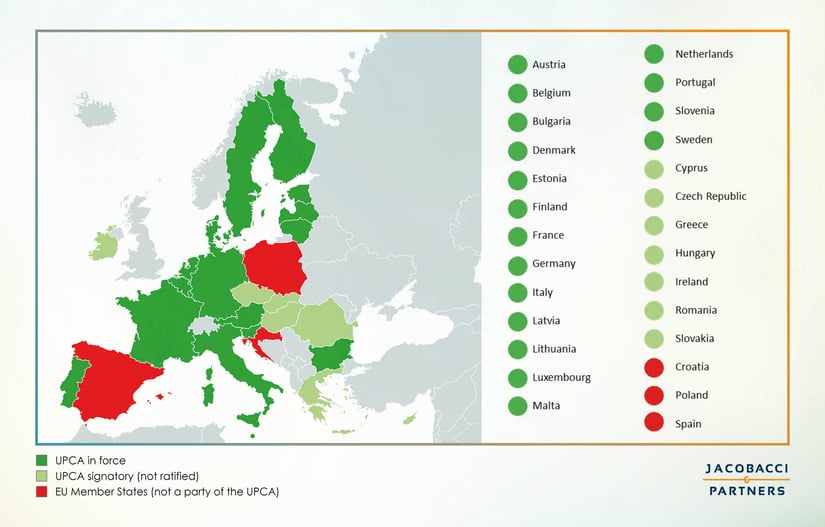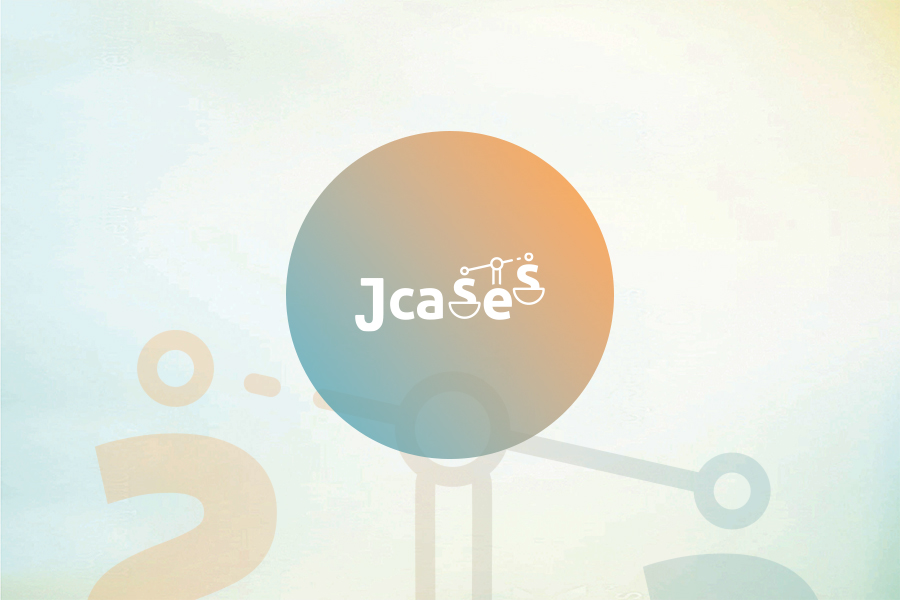In the field of intellectual property, the landscape is constantly changing, and there is a certain striving towards the search for a delicate balance between harmonizing international legislation and adapting to the needs of individual countries. One of the most recent developments in this area is the Unitary Patent System, a significant step forward towards simplifying patent protection in a considerable part of the European Union. By delving into the complexities of this system, its legal, procedural, and economic implications become evident.
At its core, the Unitary Patent System introduces an innovative approach to patent protection.
To date, out of the 27 countries of the European Union, 24 countries have signed the International Agreement on a Unified Patent Court (UPC) and the one on the Unitary Patent (which entered into force together as inseparable comprehensive legislation), but only 17 countries have ratified these Agreements, actively becoming part of the Unitary Patent System.
European Patents with unitary effect
European Patents with unitary effect, unlike traditional European Patents that require validation in individual countries, provide, through a single request, uniform protection that can only be limited, transferred, or revoked uniformly.
The procedure until the granting of the European Patent remains unchanged, as do the opposition and limitation procedures before the European Patent Office (EPO).
Unitary effect is obtained through a streamlined procedure, which involves a request to the EPO, accompanied, during a transitional period of 6 years, by a single translation of the granted European Patent text in English or in an official EU language if the text is already in English. The request for unitary effect must be filed strictly within one month from the publication of the mention of the grant of the European Patent in the European Patent Bulletin. Additionally, the EPO will refuse the request for unitary effect if the European Patent has been granted with different sets of claims for different countries.
In all member states* whose local law permits it (Art. 139(3) EPC), it is possible to have dual protection of a European Patent with unitary effect and a national patent. The local laws of individual member states also govern some safeguard measures (so-called "Safety Net"), including the possibility of validating the European Patent after a possible refusal of unitary effect. These safety measures are in force in many** of the 17 countries of the Unitary Patent System but not in all, as they result from decisions of local governments.
* Austria, Denmark, Estonia, Finland, France, Germany, Italy, Luxembourg (draft legislation to abolish this possibility), Malta, Portugal, Slovenia, Sweden.
** Austria, Belgium, Bulgaria, Denmark, Estonia, Finland, France, Germany, Italy, Latvia, Lithuania, Netherlands, Portugal, Slovenia, Sweden.
Costs of the European Patent with unitary effect
A crucial aspect of the Unitary Patent System concerns the associated costs and renewal fees. There is no fee for the request for unitary effect, while a single annual renewal fee is due centrally to the EPO. There are provisions for fee compensation for small and medium-sized enterprises (SMEs) and universities headquartered in one of the member states.
The Unified Patent Court (UPC)
The UPC is a court common to all member states of the Unified Patent Court Agreement and is competent for disputes related to both "traditional" European patents - namely those granted by the EPO and individually validated in the countries of interest - and the "new" European Patents with unitary effect.
The UPC consists of a Court of First Instance, a Court of Appeal, and a Registry, and is composed of both legally-qualified judges and technically-qualified judges.
The UPC issues binding and immediately enforceable decisions in all member states, ensuring uniform case law resulting from a consistent interpretation and application of patent law. Moreover, the UPC conducts proceedings in various languages, including English as a possible working language admitted in each local Division, further enhancing accessibility and inclusivity in the patent ecosystem.
In accordance with Rule 5 of the Rules of Procedure of the UPC, up to one month before the expiry of the (initial) 7-year transitional period, it is possible to choose to revoke the UPC's jurisdiction by means of a so-called "opt-out request" to be submitted to the UPC Registry; this is not possible if proceedings have already begun before the UPC. Furthermore, through a subsequent communication to the UPC Registry, it is possible to withdraw the opt-out request, reinstating the UPC's jurisdiction.
Regarding the choice of forum, for infringement or revocation proceedings of a traditional European Patent without waiving jurisdiction (opt-out), the plaintiff may, still within the transitional period, resort to either the UPC or a competent national court of its choice; the case will be examined and remain under the jurisdiction of the forum first seized. Conversely, for European Patents with unitary effect, the UPC always retains jurisdiction, as waiving (opt-out) is not possible.
Implications and Concluding Remarks
The advent of the Unitary Patent System presents opportunities and challenges for patent holders and stakeholders. On the one hand, it offers a streamlined and economically advantageous means to protect inventions in a significant part of the European Union, reducing administrative burdens and costs, especially for holders seeking broad geographic coverage. On the other hand, the complexities related to language regimes, procedural nuances, and transitional measures require a precise understanding of the system's intricacies. For example, considerations regarding dual protection along with national patents, implications of refusal of the unitary effect request, and interaction between the UPC and national courts require careful consideration and a strategy that takes into account the entire patent portfolio.
Comparative analyses between the protection of European Patents with unitary effect and traditional validations underscore the importance of informed decision-making. While the former offers centralized protection and simplified procedures, the latter may still be relevant in specific contexts, requiring a balanced approach tailored to individual needs and circumstances.
The Unitary Patent System outlines a paradigm shift in European patent law, ushering in a new era of efficiency, consistency, and accessibility. Navigating the complexities of this evolving landscape requires a careful understanding of its aspects. Embracing the opportunities presented by the protection of the European Patent with unitary effect and the UPC, proprietors of a European Patent can safeguard their innovations and propel Europe towards greater harmonization and competitiveness on the global stage.
Article by Simone Lorenzi





